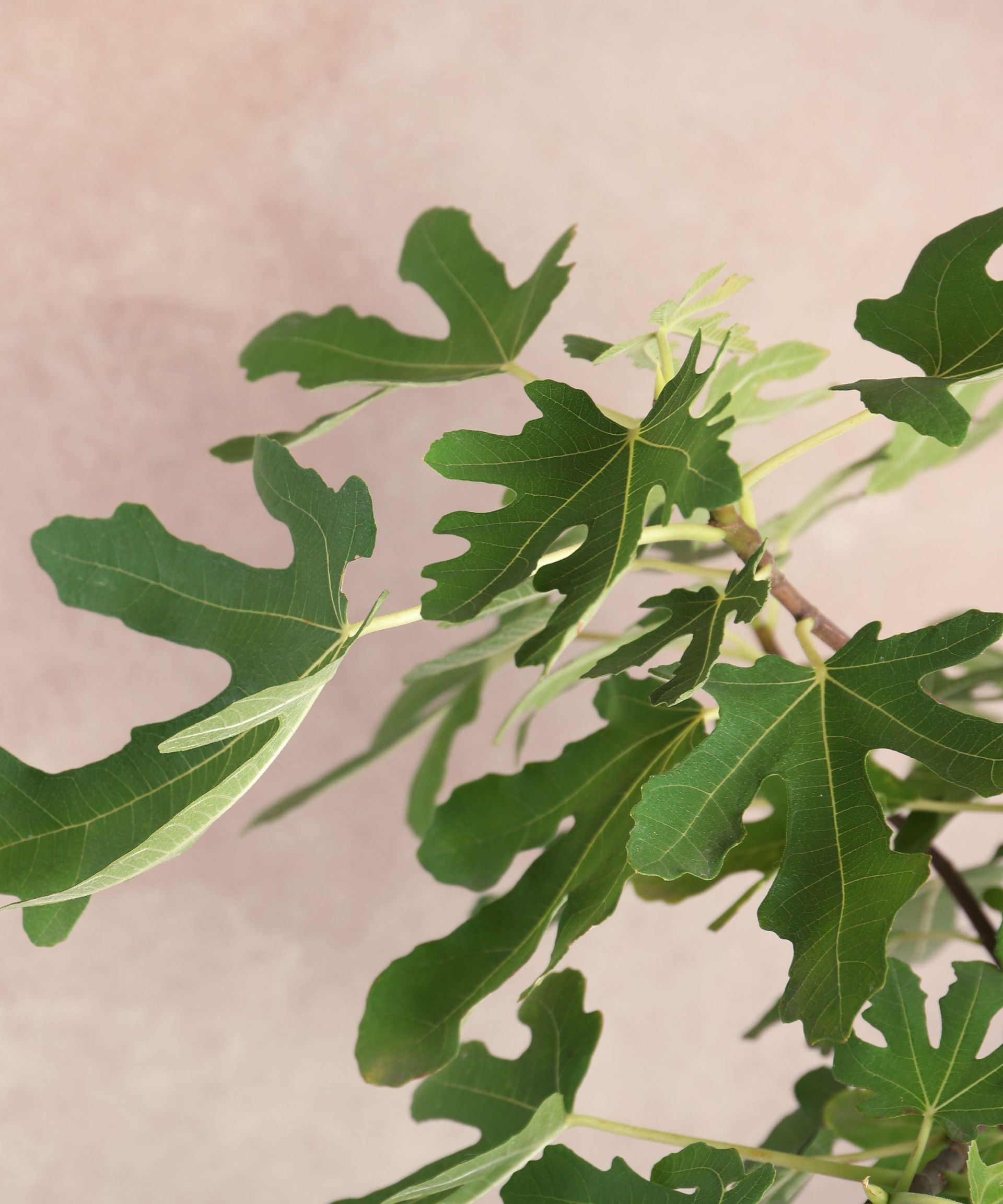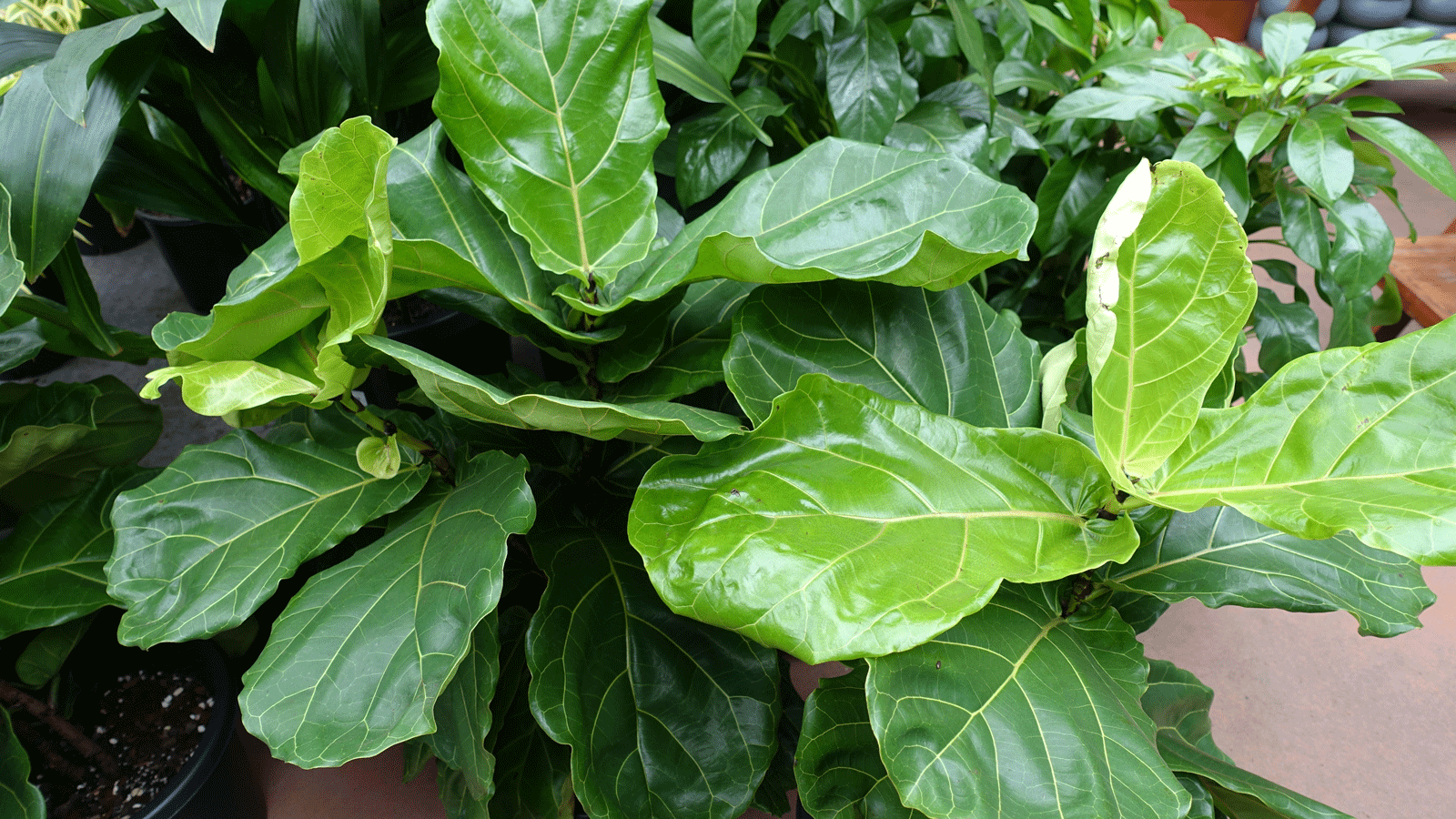Why are my fiddle leaf fig's leaves turning brown?
Let the experts advise on why your fiddle leaf fig’s leaves are turning brown – and give tips on how to solve it
- (opens in new tab)
- (opens in new tab)
- (opens in new tab)
- Sign up to our newsletter Newsletter


Concerned about why your fiddle leaf fig’s leaves are turning brown? Then this guide is for you. Laden with insight and handy tips, it will help you restore your plant to its former glorious self.
There are a few logical reasons as to why this plant’s handsome leaves start to turn unsightly brown. Identify the cause and you are halfway to solving the problem. They come from the humid rainforests of West Africa, yet you can grow and care for fiddle leaf figs in a heated home; however, there are few areas where they can be a little picky.
We’ve consulted the experts to see which are the most likely causes for why fiddle leaf figs' leaves occasionally turn brown, and to find out how they can be rectified.
Why are my fiddle leaf fig's leaves turning brown?
Check this list for one of the most likely causes of brown leaves on a fiddle leaf fig.

Too little water
Foliage with brown crispy edges or – even worse – inward curling leaves are both guaranteed signs that your plant is thirsty and in desperate need of water. Another surefire indicator is hard compost that shrinks away from the edge of the pot. If any of this sounds familiar, then it’s time to step up your watering regime.
Generally, fiddle leaf figs need to be watered once a week, but this may vary depending on the time of year and the size of plant and pot. Misting every three or four days will also help to increase humidity and improve the health of your plant.
Too much water
A classic plant parent mistake, overwatering a fiddle leaf fig can lead to root rot and the leaves developing brown spots. These could appear as spots in the center of a leaf or around the edges, either way action needs to be taken.
‘The amount of water your fiddle leaf fig needs each week is unique and depends on the conditions of your home,’ suggests Claire Akin expert at Fiddle Leaf Fig Plant Resource (opens in new tab). ‘A simple rule that many owners like to follow is to give a cup per two feet. So, if your plant is two feet tall from the base of the soil to the tallest leaf then you would give it one cup of water a week.’
Poor drainage
Although they like moist soil, figs in general hate sitting in sodden conditions. In fact, this can lead to root rot which will eventually cause the plant to perish. To prevent this from happening it’s important to ensure their soil is nutritious but free draining otherwise red and brown spots can appear on the leaves.
Danielle Sawan of The Indoor Nursery (opens in new tab) explains, ‘This happens when the plant cell walls cannot contain the excess water any longer and burst, causing the reddish tint. This is known as “edema” or “oedema” in scientific terms. If this happens, then you’re either watering way too much or the water is accumulating in the soil (aka has poor drainage).’
Choose a potting compost that is slightly acidic and contains perlite, charcoal, sand to help with drainage.
Plant pots with large drainage holes are also a must. Usually, plain plastic nursery pots these can be slipped into larger decorative planters so they are out of sight and any collected water can easily be tipped away.
Low light levels
Too little sunlight is a real problem for fiddle leaf fig plants, and they will gradually start to develop yellow leaves, brown spots on leaves or begin shedding leaves altogether. If you suspect this is the case its time to move your plant to a brighter position.
‘A nice bright corner near an east or south facing window is the perfect place for your ficus,’ advises Chris Harrison on The Indoor Nursery. ‘Some figs in the jungle find themselves growing in the branches of larger trees and send aerial roots down to the forest floor. Think of the forest canopy and filtered sunlight when choosing a spot for your plant.’
Strong direct light
Brown areas appearing on the foliage of a fiddle leaf fig can be a sign of scorching, caused by strong sunlight falling directly on to the leaves. Usually blistered or crispy they look unsightly but once they have occurred, they will do the plant little harm overall.
The simplest way to solve this is to move the plant around 2-3 ft away from the window, further back into the room. Mist the unmarked leaves with a water spray and water the plant to aid recovery.
If some leaves are very scorched, you make need to take drastic action. Naomi from the Houseplant Authority blog (opens in new tab) says, ‘Unfortunately, sunburnt fiddle leaf fig leaves are scarred for life, and there is no way for them to recover. The way to treat sunburnt leaves is to remove them from your plant. However, if the sunburn spots are very minor and the cosmetic damage does not bother you, you can leave them as they are.’
Humidity too low
Consistency is key with fiddle leaf figs, and this includes humidity levels. Sudden changes in temperature or air moisture levels can shock the plant and slow down their growth, and even prompt them to develop cracks, holes or even drop their leaves.
Combat this by misting the plant every three to four days and perhaps, placing a humidifier nearby. Standing the plant on a tray filled with pebbled and water can also help as can grouping other plants together.
Wherever you choose to position your fiddle leaf fig, be sure to avoid chilly drafhts from open doors or proximity to cold windows. Nearby AC units, stoves and fireplaces can also cause problems.

How do you fix brown fiddle leaves?
You can't fix brown fiddle leaf fig leaves. Instead, you will need to remove any brown leaves from the plant altogether. You cannot turn them green again, but you can check the plant is happy with its watering routine and position to ensure no more leaves turn brown.
Should I remove brown leaves from fiddle leaf fig?
You should always removed brown leaves and any damaged stems from a fiddle leaf fig; doing so will ensure your plant remains healthy; leaving them in place can spread disease and uses energy that the plant could direct to healthy leaves instead.

Jill Morgan has spent the last 20 years writing for Interior and Gardening magazines both in print and online. Titles she has been lucky enough to work on include House Beautiful, The English
Home, Ideal Home, Modern Gardens and Gardeningetc.com. Although much of her career has involved commissioning and writing about reader homes and home improvement projects, her
everlasting passion is for gardens and outdoor living, which is what she writes about for Homes & Gardens.
-
-
 How to clean a range hood – expert tips for scrubbing every inch
How to clean a range hood – expert tips for scrubbing every inchAn appliance expert explains how to clean a range hood to keep it in perfect working order
By Chiana Dickson • Published
-
 Why is my fiddle leaf fig dropping leaves? Expert reveal the common causes
Why is my fiddle leaf fig dropping leaves? Expert reveal the common causesThese are the key signs to spot so you can take action and stop this leaf drop problem in its tracks
By Sarah Wilson • Published

